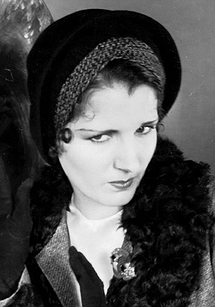به ازای هر نفری که با دعوت شما در منظوم ثبتنام میکنند 20 امتیاز میگیرید.
لینک دعوت:


Still, she managed to sign a three-year contract with RKO, starting off with another uncredited part in the south-of-the-border musical Rio Rita (1929), featuring the comedy duo of Bert Wheeler and Robert Woolsey. For the next few years, Lita seemed practically glued to the same company, appearing with Wheeler & Woolsey in The Cuckoos (1930) (as another dusky senorita); Everything's Rosie (1931), an attempt never to be repeated, to providing a solo vehicle for Woolsey; and Girl Crazy (1932), an expensive romp with music by the Gershwins, which also failed to recoup its cost at the box office. No improvement was the naive and shoddily-made crime drama The Pay-Off (1930). With a succession of her films now deemed palpable commercial failures, Lita found herself again relegated to the doldrums, sliding down the bottom of the cast lists. There was a glimmer of hope for her career with a sixth-billed role as Birdie Klauber in a maudlin Fannie Hurst three-handkerchief tearjerker, Symphony of Six Million (1932). Then followed another inconsequential comedy, Goldie Gets Along (1933), and a series of loan-outs to other studios. She co-starred (for once) in five two-reel comedies for Mack Sennett and in Sandflow (1937), an obscure Buck Jones western. She also had a cameo as a chorus girl in Fox's Charlie Chan's Courage (1934), and then came a succession of similar no-name parts as showgirls, secretaries and even an Indian squaw.
Lita Chevret briefly attracted newspaper headlines as one of George Raft's romantic conquests, but this was no more lasting than her remaining time in Hollywood. After a swan song in The Philadelphia Story (1940) (as a manicurist), she called it quits and retired to her home in Palm Springs. There, she lived out the rest of her days in relative obscurity, except for a wartime overseas tour with the USO.